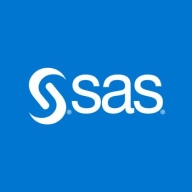

Find out in this report how the two BI (Business Intelligence) Tools solutions compare in terms of features, pricing, service and support, easy of deployment, and ROI.


SAP BusinessObjects Business Intelligence Platform is a versatile and flexible solution for reporting and dashboards, focusing on analytics and ad hoc reporting. It can be deployed on-premise or in the cloud. The solution includes tools such as Web Intelligence, Crystal Reports, SAP Lumira, and Analytical Cloud and is primarily used for comprehensive business intelligence reporting.
The most valuable features include excellent reporting features, good technical support, scalability, and the ability to translate database data into business language. The solution has helped organizations by providing analytics, monitoring KPIs, and making important decisions as a financial business.
SAP BusinessObjects Business Intelligence Key Features
Reviews from Real Users
SAP BusinessObjects BI stands out among its competitors for a number of reasons. Several major ones are its user-friendly dashboard, its impressive reporting and analytic features, and its ability to integrate with multiple solutions.
A managing partner at a tech services company writes, "One of the most valuable features of SAP BusinessObjects is that it's not a dashboarding solution. It's a real product. You can create operational reports and publish it to anyone. You can create schedules. You can create a Universe, semantic layers. There's also a security configuration. It's a huge product, so if there is a business need, SAP BusinessObjects can cover it."
An associate manager at a consultancy notes, "It provides flexibility for creating reports. It is very good for creating highly complex reports. I like this solution because when I buy BusinessObjects, it comes with many components, such as reporting, dashboard, and data visualization tools. Its performance is good. It is running on top of SAP BW and SAP HANA."
A manager of data analytics and interfaces at a healthcare company says, "It has got great flexibility. As a reporting tool, it has a great deal of flexibility for numerous data resources that you can bring into it. It allows you to write your SQL query directly within the product. It has great visualization.
SAS Visual Analytics is a data visualization tool that is used for reporting, data exploration, and analytics. The solution enables users - even those without advanced analytical skills - to understand and examine patterns, trends, and relationships in data. SAS Visual Analytics makes it easy to create and share reports and dashboards that monitor business performance. By using the solution, users can handle, understand, and analyze their data in both past and present fields, as well as influence vital factors for future changes. SAS Visual Analytics is most suitable for larger companies with complex needs.
SAS Visual Analytics Features
SAS Visual Analytics has many valuable key features. Some of the most useful ones include:
SAS Visual Analytics Benefits
There are many benefits to implementing SAS Visual Analytics. Some of the biggest advantages the solution offers include:
Reviews from Real Users
Below are some reviews and helpful feedback written by PeerSpot users currently using the SAS Visual Analytics solution.
A Senior Manager at a consultancy says, “The solution is very stable. The scalability is good. The usability is quite good. It's quite easy to learn and to progress with SAS from an end-user perspective.
PeerSpot user Robert H., Co-owner at Hecht und Heck GmbH, comments, “What I really love about the software is that I have never struggled in implementing it for complex business requirements. It is good for highly sophisticated and specialized statistics in the areas that some people tend to call artificial intelligence. It is used for everything that involves visual presentation and analysis of highly sophisticated statistics for forecasting and other purposes.
Andrea D., Chief Technical Officer at Value Partners, explains, “The best feature is that SAS is not a single BI tool. Rather, it is part of an ecosystem of tools, such as tools that help a user to develop artificial intelligence, algorithms, and so on. SAS is an ecosystem. It's an ecosystem of products. We've found the product to be stable and reliable. The scalability is good.”
We monitor all BI (Business Intelligence) Tools reviews to prevent fraudulent reviews and keep review quality high. We do not post reviews by company employees or direct competitors. We validate each review for authenticity via cross-reference with LinkedIn, and personal follow-up with the reviewer when necessary.